A Short History of English by Kenneth Eckert, Ph.D. |
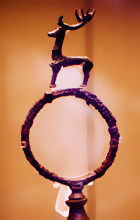 |
| Go here to see a translation of Beowulf | 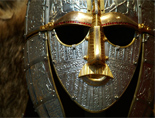 |
Go here to see a translation of Havelok the Dane | 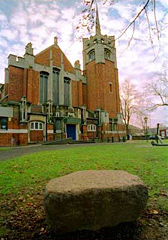 |

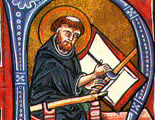 |
Introduction Where does English come from? |
A Short History of English by Kenneth Eckert, Ph.D. |
 |
| Go here to see a translation of Beowulf |  |
Go here to see a translation of Havelok the Dane |  |

 |
Introduction Where does English come from? |
This is intended to be a non-specialist’s guide
to Old and Middle English. I say this
delicately because scholars in this area can be particular and online debates about the history of English can be lively over tiny details—I remember a debate in 2000 about the ingredients in Anglo-Saxon bread which
lasted weeks! I also don’t want
to bore those people who just want some idea as to what I’ve seemed to waste so many years working on. This page is meant to provide a light overview of the history of the language. If you don’t agree with something, tell me. Although some scholars argue there is a difference, I will use the terms Old English and Anglo-Saxon in referring to the language interchangeably. IE is sometimes called PIE, Proto-Indo-European. While scholars are fairly sure it was spoken, we can’t be sure what it sounded like because it was never written; thus we need to go backwards from the languages and words we do know from surviving texts to hypothetically reconstruct the language. It of course changed over time as well. By the time of Christ, IE was extinct and had broken down into the main branches which you see below in this simplified table: |

Source: A Biography of the English Language, 1988
(C.M. Millward)
The myth of the “fall” of the western Roman Empire dies hard, with attractive images of busty Roman women in togas running from fires and barbarians, in technicolor. It would be closer to the truth to say that the western empire gradually declined over the 300s and 400s, as did its language. Latin was an extremely important ancient tongue, but even in its own time it competed with Greek as the working language of the Roman provinces. The New Testament scriptures were originally written in Aramaic, a dialect group of Arabic/Hebrew before translation into Greek, with Latin only following in later centuries. As Roman authority disappeared, Medieval Latin survived in the church and universities, but among common peoples it slowly degraded into what we call Street Latin or Vulgar Latin. That then broke apart into regional dialects which became the Romance tongues (Italian, French, Spanish, and Portuguese). By 813 priests had to be directed to preach in these new languages rather than Latin, as lay worshippers had become increasingly unable to understand it, though Latin terms are of course still used in the names of parts of church services to this day. Note that Basque, spoken in northern Spain, is missing here. It is not Indo-European, and scholars still aren’t sure where it’s from; it may be a lost pre-Indo-European tongue. But our focus is on English, which as we can see begins as a dialect of German. The first lesson you must ingrain in your head is the most important: English doesn’t come from Latin. It comes from Germanic. Although a simple majority of words in English come from Latin or French, they are not the most-used words; the core vocabulary and grammar of the language is directly from Germanic, and all of its pronouns and function words are also Germanic, either from Anglo-Saxon or from Norse (what’s now Danish). You can also see that French does come from Latin. The Franks were a tribe which moved into southwestern Europe during Roman times, mixed with the resident Celtic peoples, and adopted Roman culture and language, unlike the central-European Germans which never joined the empire and fought to keep their own culture (the “beer/wine line” of Europe). In old Europe ethnicity and language aren’t necessarily the same, as the French are originally also largely Germanic peoples who romanized themselves and created a new dialect of Street Latin, which became French. A similar development leads to Spanish. How did English develop? Around 400 AD, when the Romans were threatened on their own turf and abandoned Britain, they left the island in political disorder. Settlers from the northern German areas of Angle, Saxony, and Juteland all came, supposedly on the “invitation” of the threatened Romans, and forced the inhabitants north and west into what is now Wales, Ireland, and Scotland. Angles eventually gave their name to the country and to the language: Angle-land, later slurred into the word England (The British are famous slurrers—the word bedlam comes from a London mental hospital named Bethlehem). At first continental Germanic would have sounded the same as that spoken on the island, but in the 5th century there’s no chunnel or telephones—over generations the language would have drifted further apart as it adapted to island geography, politics, and lifestyles, until it became unrecognizable. Because the Germans tended to overwhelm and drive out the native British Irish, Welsh, and Scots, Old English unfortunately has little influence from those languages. |
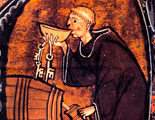 |
Old English (Anglo-Saxon) About 500 - 1100 AD |
One way of categorizing languages is to call them inflectional, agglutinative, or isolating, as Millward does. No language fits totally into one of these categories, but they are useful in understanding how grammar creates meaning:
Latin is an inflectional language, and so word order is almost irrelevant. If you want to say “The dog bit the man,” you can use hominis canem mordet, canem mordet hominem, or canem hominem mordet. What word you put first adds emphasis to that word, but otherwise the word order doesn’t really matter as the endings -et and -em tell you who bit who. In English, we only know because dog comes first. Old English (OE) is slightly more inflectional, as it used word endings on nouns, verbs, and adjectives. It also had grammatical gender, so that nouns were male, female, or neuter regardless of what they physically were. As Twain joked, in German a girl is das Mädchen (neuter) but a turnip is die Rübe (female). The grammatical gender of the European languages always seems useless to modern English speakers, but OE had it as well, a holdover from IE’s three genders. It’s been theorized that in IE male nouns “did” things and female nouns “were” things. Although admittedly sexist, the language gender system served a purpose. Thus OE was slightly more freewheeling in word order than modern English, and we still have archaic expressions such as “He for his lover pined” and “Where are my fiddlers three?” There was no clear sense of a and the in the language; OE made do with an (one), and se/þe (this). Latin also didn’t have any definite articles, although Late Latin had ille (this) and illa (that), which becomes il, el, le, la, and so on in the Romance languages. OE used fewer prepositions, so that we still have the grandfathered statement ic ga ham ("I go home") which has no “to” preposition. OE formed its plurals in several ways (-um/-a/-as/-en), thus one ox, two oxen. At one very early point OE used -er: one child, two childer. Because most people spoke and did not read English, sound changes could sometimes confuse grammar, so that the -en ending caused people to say “childer-en,” children (mouse-ez was also slurred into mice). Some of these words have remained “grandfathered” in English even after the -s/-es ending took over in Middle English. |
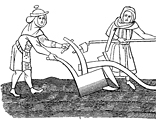 |
The Lord’s Prayer About 1000 AD |
| Listen to it |
Fæder ure þu þe eart on heofonum
|
Our Father who is in heaven be Your name made holy May Your kingdom come to happen Be done Your will on earth just as in heaven Our daily bread give us today And forgive us our guilts just as we forgive our debtors And do not lead You us into tempation, but deliver us of evil Amen. |
This is my educated guess at what Old English sounded like, as there are of course no recordings. Almost every letter is pronounced in Old English, as you can hear. There were basically no silent letters. Early scribes naturally wrote the language as they heard it. Notice also the letters ð and þ
in the samples, which both sound like th. OE had a primitive writing system called runes, which were chopped into wood and were thus very angular-looking (try to cut a good curve into wood with a knife). When Roman missionaries came to England around 600 to reestablish the church they brought their writing system along with lots of new loanwords. Old English is good at describing basic concepts
and objects, but the language lacked governmental and religious terminology,
and so the solution was usually to import a foreign term, such as candel or carte (document), although sometimes an OE word combination would
do, such as halig gast (Holy Ghost). |
 |
Beowulf About 800-1000 AD |
| Listen to it |
Hwæt! We Gardena in geardagum, |
Listen! We have heard of the glory of the kings of the Spear-Danes in days of yore, and how the princes performed courageous deeds. Often Scyld Scefing deprived many an enemy band of their mead benches, terrifying warriors, long after when at first he was found destitute. He was awaited as their consolation, and thrived under the skies, prospering in honor until each one of the neighboring people over the whale-road had to obey him and pay tribute. That was a good king! |
|
Beowulf is the first epic poem of English. It’s basically a monster/hero story where a young adventurer named Beowulf fights a beast named Grendel and his mother, and later has to battle a fire-breathing dragon, though scholars see various mythological and Christian symbolisms in the story. You can read a longer explanation of Beowulf and read a full translation here. The subjects of Old English poetry can sound cold to modern ears. Women are seldom mentioned and there is little romantic love, humor, or sex; at best there are riddles with dirty or smutty answers. The Anglo-Saxons certainly fell in love—or there would be no more Anglo-Saxons—but our modern fixation on boy-meets-girl romantic stories is not common to all societies. To the Old English poets, the fraternal love between warriors and their lords, and the willingness to battle until death regardless of odds, were all higher and more beautiful themes. There was of course homosexuality in medieval England, but this was certainly not normally the meaning of such relationships. Not everyone actually lived out such lofty personal qualities, but these are the ideals which animate Beowulf.  Beowulf and Old English Poetry Beowulf and Old English Poetry
Most Old English poetry followed a fairly regular rhyme scheme whereby each line would have a short pause in the middle. Each line would also have two or three words which alliterated (Peter Piper picked a peck of..) rather than rhyming with the next line: monegum mægþum /meodosetla ofteah; “many military-men/had their mead-benches taken.” Notice the alliteration in each line in the sample, such as ‘g’ in line 1, ‘s’ in line 4, and ‘m’ in line 5. Modern poetry is usually iambic, which means that the second half of each beat receives emphasis: I wan-dered lone-ly as a cloud. In Old English, the first syllable of the word is usually stressed, and the same is true of the poetry. |
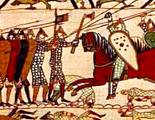 |
Middle English About 1100 - 1500 |
Just as the Germans had invaded England, in the 800s so did the Vikings, who were also Germanic Scandinavians. The Vikings began as occasional traders or smash-and-grab artists who would zoom into an inlet (called a wick, thus wick-ing—Viking, as well as towns ending in wic like Norwich) and take off in their boats with some loot and girls for slaves or wives before a militia could be raised. Over time the Danes began to permanently settle, and so English began to become infused with Norse words in addition to Latin. The Normans who conquered England in 1066 on the pretext of a succession dispute were really just post-Viking Danes who lived in northern France. Norse culture and language was pretty close to that of the Anglo-Saxons. However, the Normans spoke French and were culturally Latinate, and this had an enormous effect on English and the culture of England. The Anglo-Saxons did not have castles or knights, and their kings were more like short-term chieftains. The Normans built in stone and instituted the familiar medieval system of feudalism, where a food chain ran from the king down through aristocrats and knights who served him in exchange for land rights, down to the peasants who worked the land. The tension between the native English, who saw their king as serving at the permission of the people, and the Latinate Normans, who saw the king as serving as God’s agent on earth, was strong in the time and has never totally subsided. The Robin Hood legends began as a fictional acting out of these animosities between the supposedly good, honest English rebel and the selfish, oppressive French lord. Very often the peasants spoke English and their lords spoke French, so that the peasants raised pigs, cows, and sheep, and their masters ate pork, beef, and mutton— English-word animals and French-word dishes. English nearly disappeared as a written or court language over the next two centuries. Yet by the time of the Hundred Year’s War (1337-1453) the Normans had become so alienated from the European French and their language that French became a secondary tongue in England along with Latin. It didn’t help that the English version of French was mocked as inferior by continental speakers. By Chaucer’s time the court is speaking English again, and in Shakespeare’s Henry V even the king is stumbling through his French. But during those 200 years English had changed so much that Chaucer probably wouldn’t have been able to read Beowulf even if he had known of it. The language was full of new words from French. The centuries of missionaries, Danes, and Normans running around England had seemed to cause English a grammar nervous breakdown. The inflections were confused and simplified as English absorbed countless foreign speakers. Word order became more rigid as prepositions, determiners, and articles stepped into the breach. Grammatical gender gave way to the natural gender of pronouns for men, women, and things. Modern English has a few romantic expressions where objects are personified, such as the way we say “she’s a nice ship,” but these aren’t necessarily OE holdovers; OE scipu (ship) was neuter. Again, Anglo-Saxon was an earthy, concrete, and rough language, though in its poetry the writers are fond of artistic expressions (a sea is a “whale road"). The words which English absorb from Latin or French are generally ones which either the English didn’t have words to describe, such as technical, medical, and philosophical concepts from the Roman world, or words for aristocratic concepts. To this day (and this is important for learners of English to recognize), native speakers will feel that “Germanic” words in English sound plainer but more honest, and that “French” words are elegant but sometimes pretentious. Thus common/male terms tend to be Germanic (beer, bread, fight) and fashionable/female terms are French (wine, perfume, cafe). Anglo-Saxon was thus excellent for visual objects and actions, but less so for abstractions. French supplied these missing terms and some grammatical constructions as well. An important development in early Middle English around 1100 is the word the, which originates as a variation of that. |
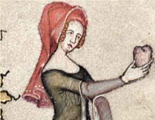 |
Havelok the Dane About 1285 |
| Listen to it |
Herkneth to me, gode men - |
Pay attention to me, good men, |
Middle English isn’t easy and still requires training, but it’s certainly easier than Old English. The vocabulary is looking more familiar because of the French loanwords, and the word order is more “normal.” There are recognizable connecting words like and, a, the, and the pronouns are the same as in Modern English. Middle English still pronounces everything, and the vowels seem to sound all wrong, but it’s less impenetrable than Beowulf. Havelock the Dane is about another heroic Dane but demonstrates how English culture is changing under the Normans. Havelock is a mighty warrior and his wife displays a masculine firmness in a dangerous world, but the poetry is in rhyming couplets and the poet also emphasizes that Havelock is gentle around children, loves his wife, and acts politely even to enemies, all courtly and Christian attributes of feudalism. Again, real knights likely didn’t always have such sensitive morals, but such ideals were evidently real enough to populate most English romances of this period. As you can see, the literature is moving away from heroic ideas of war, revenge, and smashing heads toward more modern ones of gentlemanly conduct and romantic love, much of this because of the influence of Christianity. |
 |
The Wife of Bath (Chaucer’s Canterbury Tales)
About 1386 |
| Listen to it |
Experience, though noon auctoritee |
Even if there were no other authority |
Geoffrey Chaucer (c. 1343-1400) is hugely important as the “father” of English literature. He wasn’t the first to write poetry in English, of course, but he helped make it respectable as a literary language. Chaucer was a middle-class son of a wine seller who worked his way into a minor position in the royal court as a sort of medieval government clerk; he worked in processing import customs and in supervising building projects for the crown. He is of course remembered for his writing; some of his poems were serious or tragic (he wrote the first scientific article in English on the astrolabe, an early nautical compass), but his best known work is The Canterbury Tales (c. 1386), which is a series of stories told by pilgrims on a holiday tour to see holy sites in Canterbury. Middle English isn’t a monolithic period. By Chaucer’s time feudalism is fading as a credible economic and cultural system in England, weakened by a disastrous plague in 1348-51 which led to a labor shortage and a peasant’s revolt in 1381, and by the beginnings of a modern economy based on trade and capital. Chaucer is not only a gifted poet for his depictions of human life, but he’s really funny and at his best when he’s making fun of the values of his day, or himself. Part of my dissertation argued that “Sir Thopas” is partly a gentle laugh at the pomposity of the medieval romances but also a joke on Chaucer’s seeming inability to make his own story of a heroic knight and a swooning lady. Knights still existed in Chaucer’s day but even then were respected less, and the ideas of shining knights in armor and fair ladies were already becoming antiquated. The clichés about the “dark ages” that depict a lost era of ignorance and religious repression are as tiresome as they are untrue. By the end of the middle ages Europe is a place of advanced literature, culture, architecture, and metallurgy. The church fostered the modern system of universities and hospitals. Yet its sciences, mathematics, and medicine were backward and its philosophy highly developed but largely limited to theological issues. Europe was ready for new influences from the Arabic and Middle Eastern world. |
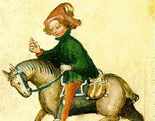 |
Early Modern English About 1500 - 1850 |
What we call the renaissance is, like the decline of western Rome, a very gradual process of growth in the humanities and sciences, spurred partly by printing and partly by the growth of trade and the influx of Greek scholars after the end of the eastern Roman empire in Constantinople (Istanbul) in 1453. By the time of Early Modern English, French has faded in use outside the aristocracy and diplomacy, and Latin is confined to church use. Although British universities also teach in Latin, some modern scholars are beginning to write in English, which has become increasingly powerful due to its constant absorbing of foreign words. While students will say that Chaucer sounds odd, by the 1500s the English in plays such as Everyman start to look very familiar, even if the vocabulary is less rich than in the confidence and flowering of English in Elizabethan England. The tradition of miracle and mystery plays begins with church plays performed by amateurs during religious festivals, and most of the plays have simple plots, colorful costumes, and slapstick humor. In the play Noah and his Wife, Noah’s spouse doesn’t want to board the ark and tells her husband that she wants to go back to their house because she forgot the forks and knives. These plays are important because English still was not fully accepted as a literary language but was used in these street folk celebrations. They are also important because over time the plays became more sophisticated and less religious, and as they moved from churchyards into private homes and then permanent ticket-supported theaters, they led to the public drama tradition which Shakespeare entered in the 1590s. Shakespeare’s texts may have difficult meanings because of all the topical references and jokes (imagine trying to understand a David Letterman monologue in 2415!), but the words themselves are mostly recognizable. One of the benefits of printing is the standardization of the different dialects in English, which helps establish the modern-sounding London area English as the standard. Because printing presses at first come from Europe with European-language letters, the last uniquely English letters are lost—ð, þ, and 3 (yogh, the end sound of “yecch"). For a while, printers try writing þe (the) as ye, but it soon becomes modern the. The ye in “Ye Olde Souvenir & Internet Shoppe” was never pronounced /jiː/. Because first-person ic (I) has shrunk to i, it is printed with a capital I to avoid confusion with other words. The printed distinction between u/v/w and between i/j isn’t always clear as well. There are not many big grammatical innovations in EME, although the use of dual respect/intimacy pronouns is fading. Middle English used thee/thou for friends and children and you for superiors. This surprises modern English speakers, who feel that thee and thou sound pompous, but the writers of the King James Bible were trying to emphasize God’s intimacy with man in using thee and thou in their translations. Even in 1611 the style was slightly old-fashioned. I won’t try to render Shakespeare’s English, although I really dislike the overdramatic, constipated Victorian accent his lines are always given in movies and television. As far as it had come, even in Shakespeare’s day English was a little unseemly a language compared to elegant French and thoughtful Latin. There still were few or no silent letters, most suffixes were pronounced separately, and the language likely had a slightly gutteral, melodic sound like someone with an Irish or Scottish brogue. |
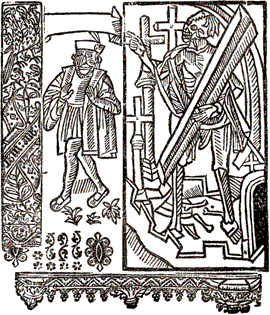 |
Everyman (Morality Play)
About 1500 |
Man, in the begynnynge |
Man, at this beginning, |
 |
Hamlet (William Shakespeare) About 1600 |
BERNARDO HORATIO BERNARDO MARCELLUS BERNARDO MARCELLUS |
Did Shakespeare write his own plays? Every once in a while a new scholar has “proof” that Shakespeare’s plays were written by someone else, whether another poet, an aristocrat, the queen, or space aliens. Like most conspiracy theories, the fact that there’s no evidence— makes it true! But there is a great deal of text and evidence showing that Shakespeare existed and wrote his plays; the cliché that “we don’t know much about Shakespeare” is less and less true. Yet one of the problems with this issue is the definition of write. Walt Disney did not “write” Cinderella or Snow White; he took them from popular folktale and adapted them for an audience, and Shakespeare did the same, making use of traditional narratives and history. His genius was in how he improved and deepened those stories. Similarly, Chaucer took his tales from pre-existing stories, and our idea that authors must make original stories is a relatively recent one. American students may have read the US constitution or related bills, but this sort of archaic legalese doesn’t really reflect how English likely sounded in the 1700s or early 1800s. Here’s an excerpt from Austen’s Pride and Prejudice from 1813 showing a fairly recognizable English, albeit one with a few now lost vocabulary words. German capitalizes most nouns, and in EME English still does too, but by the 1800s the practice is disappearing. |
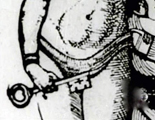 |
Pride and Prejudice (Jane Austen) 1813 |
It is a truth universally acknowledged, that a single man in possession of a good fortune, must be in want of a wife. However little known the feelings or views of such a man may be on his first entering a neighbourhood, this truth is so well fixed in the minds of the surrounding families, that he is considered the rightful property of some one or other of their daughters. “My dear Mr. Bennet,” said his lady to him one day, “have you heard that Netherfield Park is let at last?” Mr. Bennet replied that he had not. “But it is,” returned she; “for Mrs. Long has just been here, and she told me all about it.” Mr. Bennet made no answer. “Do you not want to know who has taken it?” cried his wife impatiently. “You want to tell me, and I have no objection to hearing it.” This was invitation enough. “Why, my dear, you must know, Mrs. Long says that Netherfield is taken by a young man of large fortune from the north of England; that he came down on Monday in a chaise and four to see the place, and was so much delighted with it, that he agreed with Mr. Morris immediately; that he is to take possession before Michaelmas, and some of his servants are to be in the house by the end of next week.” “What is his name?” “Bingley.” “Is he married or single?” “Oh! Single, my dear, to be sure! A single man of large fortune; four or five thousand a year. What a fine thing for our girls!" |
 |
Present-Day English About 1850 - |
While older forms of English look alien to a modern speaker, they were in their own way easier to learn. As English has spread beyond England it has developed regional dialects and adopted still more foreign words, and the pronunciation has drifted away from its written forms. As a result we also now have many silent letters and exceptions; Chaucer would have pronounced knight the way it is spelled, pronouncing even the k: kuh-nichh-tuh. Now we have words like thorough, where half the word isn’t even said. English has changed comparatively less in sound and writing since Shakespeare’s time, partly due to the introduction of dictionaries which have helped to establish a standard English. Nevertheless, Australian English certainly doesn’t sound like Newfoundland English or East L.A. English, and there are far more punctuation and symbol marks than a medieval scribe would have had, such as #, ;, and @. Shakespeare would understand much of modern English, but he would likely have trouble with web page addresses and with emoticons. He might also find the conservative English of the American east coast easier to follow than the clipped BBC or working-class accents of 21st century England. Thou/thee are now totally lost and are only heard in some fixed phrases. Grammatically, English has become slightly more isolated and less inflectional. When I was a child I might have heard people say handsomer, but it’s becoming more common to hear more in front of adjectives. I now rarely see dove as a past form of dive, instead reading dived. English still has no separate plural you, although y’all has some use in the southern USA. Occasionally in Newfoundland I still heard ye used. Perhaps under the influence of Latin, written Modern English uses more subordination (complex sentences) and a richer use of verb tense than in older forms. A sentence in future perfect continuous—“By tomorrow we will have been sailing on this cruise ship for a week”—would have sounded very strange in medieval England, which already didn’t use continuous tenses as often as we do. By the Victorian era Latin has disappeared from universities, although Oxford and Cambridge hold out for a time. Queen Victoria was herself fluent in Latin and even guest-lectured occasionally at British universities, given enough beer! Latin is still useful in medicine, law, and some traditional church liturgies and was seen as part of a gentleman’s education, along with Greek, until well into the 20th century. President Richard Nixon, for all his foibles, could read and write fluent Latin. In the last two centuries, once in a while scholarly groups have attempted to promote spelling reform, with virtually no success. This is partly because it would make every pre-existing printed book illegible, but also because different countries use different spellings (England: colour, U.S.: color) and there is unlikely to be agreement between these nations. |
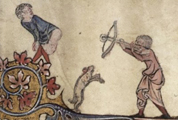 |
Facts to Bore Your Friends With |
|
 |
| Ken’s Page |